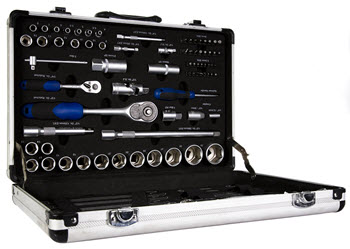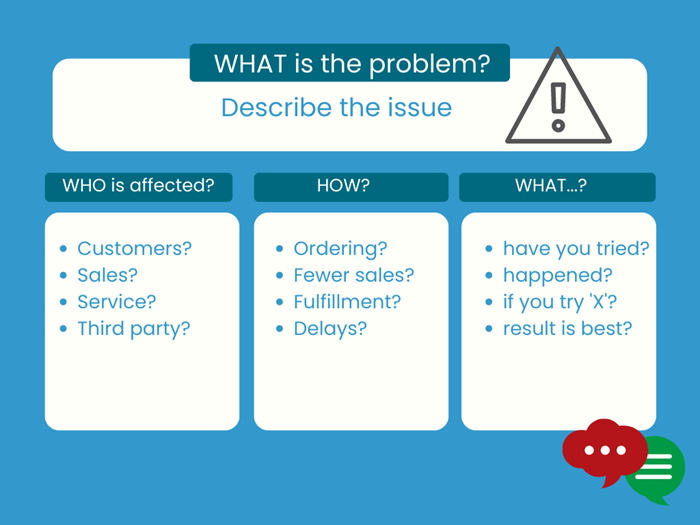 Do you still ask questions when planning a road trip?
Do you still ask questions when planning a road trip?
- What sites to see
- The best route
- Where to stay along the way
Or are you reliant on your internet searches? Even those are often in the form of a question.
Question Techniques
Like trip planning, asking questions is an effective strategy for mapping out better business communication. The following tips steer you through better techniques for asking questions.
The destination is improved business communication. Are you ready for this road trip?
1. Is the Road Open or Closed?
Picture a stop at a gas station along the way. You ask the attendant, “Do I turn right or left at the stop sign to get to Carson City?”
The attendant answers, “Right.”
- You thank the attendant and drive off.
- Soon after turning right, you encounter a road closure.
- You backtrack to where you started.
Upon seeing the attendant, you ask, “Why didn’t you tell me the road was closed?”
His reply? “You didn’t ask.”
Open Questions
You can experience the same frustration if you ask a potential customer a closed question and receive a single-word response.
- Are you happy with your current software?
- Yes
If you hope to sell the prospect on your product, that response is not very helpful. Instead of asking a closed question that elicits a short answer, ask an open question.
- What were your reasons for choosing your current software platform?
- Are there functions you wished it had?
- Or some parts that worked better?
Open questions invite conversation. They offer clues to important details – like a road closure – or features prospects want in their software.
Open questions unlock a door to the information you need.
Closed Questions
Closed questions do have a place in better business communication. Like the frosting on the cake.
Has this happened to you? You leave a productive client meeting, thinking you know the next step. You later discover your client had a different understanding. A few closed questions may have helped the situation. How?
- Confirms or clarifies understanding – So you wish you had a better analytics function in your software?
- Restates decisions or actions – Do we all agree the next step should be an audit of this function?
Closed questions close the door at the end of a successful day.
 2. Identify Landmarks
2. Identify Landmarks
In my corporate road warrior days, a paper map was my GPS. We also did not have Mapquest pointing out the Shell station on the corner. Yes, I really am that old.
Despite those challenges, a colleague once told me, “I love getting directions from you. You make it so simple with landmarks.”
Landmark questions add details to get better directions for where you want to go.
- With directions, you start with general information – Turn right on State Street.
- Then create landmarks for clarity –There’s a Shell station on the corner where you turn.
Let’s try it with our software business example.
- How many staff members use the software platform? Five of our employees.
- Are they all tech-savvy? No, only one is.
- How would you rate the skill level of the others? Intermediate. They manage well with good instructions.
See how we started on a general level (the number of employees using the software)? Next, we honed in on the skill levels.
We identified landmarks for clearer identification.
- Five employees
- One tech-savvy
- Four with intermediate skill levels
Now you have important clues to communicating with those employees.
- The tech-savvy employee offers a more functional response on the current system.
- Intermediates deliver invaluable insight for design and communication changes.
- Landmark questions identify benchmarks (what data to track, the user experience, analysis tools).
 3. Do a Multi-Point Inspection
3. Do a Multi-Point Inspection
Oh no. What is that sound? You pull your car into the mechanic’s shop and what does he do?
He asks questions.
The mechanic asks you to describe the sound, where it is coming from, and do you hear it continuously while driving. Then he does a multi-point inspection to determine the root of the problem.
Multi-point inspection questions help clarify your customer’s issues. The trick is identifying all the points. Start with the following three questions.
Okay, back to our software example, using the three starting-off questions.
What is the problem?
Sample Questions
- What exactly are you missing in the analytics function?
- Have you always had this problem, or did something change?
Who is affected? How?
Sample Questions
- What specific areas of your business are affected by this issue?
- Could you give me examples of the precise impact to each area?
Tailor questions
Tailor questions for the affected areas. For example, customer service will have a different perspective from the sales department.
- Customer service – If you had this data, how would it help you assist customers?
- Sales department – Does the current system hinder sales? If so, how?
Probe further
- Your customer replies: Management needs the data for a thorough analysis of product sales.
- Your question: Are there other affected areas? Would you say the lack of data affects sales and their performance? Or your service areas? What about your customers?
What…?
The “what” question leads to more details. Customize it to your customer’s situation, such as the software questions below.
- What have you tried to fix the problem of the missing information? Did you use a workaround?
- What happened when you tried it? What worked? What didn’t?
- What would be the best outcome you are looking for? How will you know you achieved that?
Bringing it Home
Who knew questions had so much to offer? Try these techniques when you map out your next business communication.
- Know when to use open and closed questions.
- Ask general questions followed by landmark questions on the details.
- Draw out thorough, multi-point responses from all affected.
What techniques do you have for generating effective questioning? Share your tips in Comments.
==================================
Note: In 2015, SSB took a year-long alphabetic journey for better business communication. Each post contained an A-to-Z topic for creating better business communication. This ‘Q’ post originally published on August 24, 2015, and this June 9, 2022 version updates it. The plan is to update each alphabetic post. Hopefully, it will not take a year to complete. 😊
===================================




Actually, you need to know your audience better. Some potential clients are landmarkers, others demand multipoints….
Which is the problem with advertising and mailers… you probably don’t know their predilections, so you need to do market research on television mailing list, the publication…
Excellent point. Roy. And questions are a good way to learn. 😉
Open ended questions are my favorite… until I’m ready to end the conversation. One of my favorites it ‘what’s the next step?’
Of course, I have to listen carefully too!
Like that, Anne. It’s a good way to get the person to focus on what that next step should actually be. It used to amaze me how often in my corporate career people would leave a room without knowing that information.
Good points Cathy,
I also love asking the open ended questions be it in business or in real life. It really opens door for more insights and discussion rather than asking closed questions.
I love asking questions like “What’s the next line of action”?
Thanks for sharing.
Thanks, Theodore. Great example of an open-ended question. Thanks for sharing. 🙂